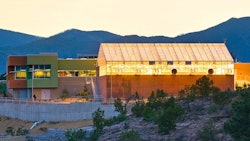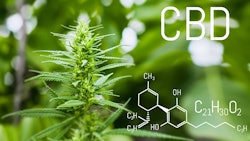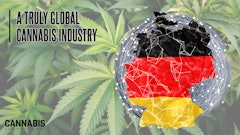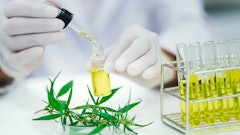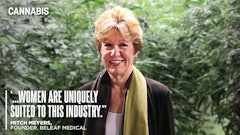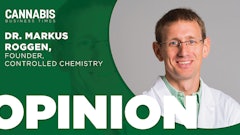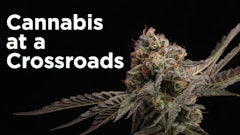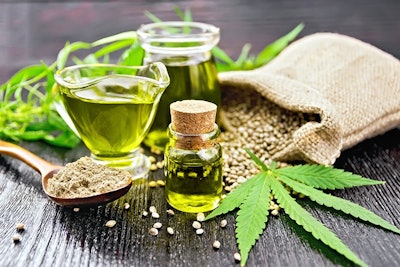
As the U.S. continues to ponder regulations for its newly legal hemp industry, it is working within the confines of a legal definition of hemp that relies on the plant’s THC content. While this is common across other countries that allow the cultivation and sale of hemp and hemp-derived products, THC caps vary by country, with some as high as 1 percent. As the U.S. hemp market continues to evolve, will its 0.3-percent THC limit prove to be a disadvantage in the global marketplace?
While the 2018 Farm Bill federally legalized hemp that contains up to 0.3-percent THC, the E.U. maintains a cap of 0.2 percent, although the European Industrial Hemp Association (EIHA) is lobbying to raise the limit to 0.3 percent, according to Richard Rose, who has worked in the hemp food industry for 25 years.
Switzerland, which falls outside the E.U., has a 1-percent cap on THC in its hemp market, along with many tropical countries, Rose says. Thailand, as another example, mandates that cannabis containing 0- to 3-percent THC is classified as hemp; 3- to 9-percent THC is classified as adult-use, and any marijuana products greater than 9-percent THC are classified as medical and therefore more tightly regulated, he says. The UN defines hemp as “CBD:THC ratio >1,” Rose adds.
Something’s got to give.
“The future of hemp is 1-percent max THC if farmers are going to be able to compete in a global market,” Rose says.
Defining Hemp
How did the U.S. ultimately set its 0.3-percent THC cap on hemp? Very arbitrarily, according to Lex Pelger, director of education at CV Sciences, a producer of cannabis-based products. A group of Canadian researchers was trying to differentiate between recreational marijuana cultivars and hemp cultivars, Pelger says, and chose the 0.3-percent THC limit as a baseline for their botanical studies.
“The researcher now says that he never planned for this to become the national standard for an entire country—it was simply what they were using in their research,” Pelger says. “I figure it’s the same thing for the E.U.—they simply chose a number, or they chose a number that’s more helpful to being competitive.”
Pelger says there are two definitions of hemp: the legal definition—such as the U.S.’s 0.3-percent THC limit—and the botanical definition.
“You can look at the genetics of a cannabis plant and pretty easily determine whether it is a ‘marijuana plant’ that’s been bred to have high levels of cannabinoids and a high amount of resin production versus the agricultural hemp plants that have been grown in China and in Europe for thousands of years,” Pelger says. “Those grow very tall and skinny. They produce very little resin and very little cannabinoids, and they’ve mainly been used for making rope and clothing.”
Most hemp growing in the U.S. to produce CBD is actually a hybridized marijuana plant, he adds. “It’s a plant that’s producing high levels of cannabinoids and the genetics have been pushed so it’s producing just underneath the legal THC limit, but it’s producing a lot of CBD instead.”
Navigating the U.S. Hemp Market—And Beyond
Like the THC caps themselves, the enforcement of THC limits in hemp also varies from country to country, Rose says. “Some just don't care—it’s hemp and they aren't going to waste resources monitoring it, especially poorer countries,” he says. “Enforcement in Italy is at the local level, and most know the farmer and trust he is not growing weed if he says so.”
The E.U.’s more relaxed hemp policies can be partially attributed to its requirement that all cultivars are OECD-certified, Rose says. Those hemp varieties, he says, are certified to contain less than 0.2-percent THC.
The U.S. has stricter policies, Pelger says. In some states, such as Colorado, agricultural authorities can order a grower to burn his or her entire crop if random testing of trichomes shows THC levels higher than 0.3 percent.
“The U.S.’s 0.3-percent [cap] is a challenge … during the growth cycle of the crop, particularly at the flowering stage—almost all crops on a given day will spike beyond the 0.3-pecent [limit],” says Cannovia CEO Brian Baum. “The plants are closely monitored and as they approach or even exceed 0.3-percent [THC], immediate steps are taken, such as reducing nutrient levels, to bring the THC levels back to the regulated tolerances. Testing is key at every stage of growing, harvesting, extracting and final product.”
“The industry in the United States, [such as people like the U.S. Hemp Roundtable], is hoping … to at least raise the THC limit to one percent,” Pelger adds. “There’s not a huge push for that right now because I think everybody’s waiting to see how the regulations boil out, but 0.3 percent—to get a cannabis plant that produces so little THC, it’s kind of a genetic freak, unless you’re using agricultural hemp plants. So, it makes a really hard problem for farmers.”
Consumers, on the other hand, may benefit from such a low THC limit in the U.S. hemp market, Baum says. “Workplace testing, sports testing and general concerns about THC levels in the bloodstream limit the market’s desire for higher concentrations of THC,” he says. “[The] 0.3-percent [limit] allows some benefits of the entourage effect, while minimizing the risk of a THC-positive test result. Moving beyond 0.3 percent, the consumer may be better served by looking at higher concentrations of THC as is found in medical marijuana.”
CV Sciences uses certified hemp seeds produced in the Netherlands, Pelger says, which contain well under the legal limit of THC. And as long as the hemp plant tests under 0.3-percent THC in the U.S., anything that manufacturers like CV Sciences produce from that plant is legal.
This may change, however, as the FDA steps in to regulate hemp-derived products.
“What CV Sciences thinks makes the most sense is to have three swim lanes when it comes to cannabis,” Pelger says. “You have the recreational market that will be up to the states at this point. And then you have the pharmaceutical lane for products like Epidiolex and for the other cannabinoid pharmaceuticals that are coming onto the market now.”
Full-plant hemp extracts with low concentrations of CBD will be the third category of product, Pelger adds, falling under the natural supplements category.
“Just like with fish oil, you can buy a low-concentration, full-plant hemp extract and use it as a natural supplement,” he says. “But if you wanted to get the concentrated version of pharmaceutical cannabinoids, then it is using the standard FDA pharmaceutical pathway, and patients would be getting that through their doctors.”
Henry Vicenty, founder and CEO of Endoca, hopes that rules around THC limits are set alongside the allowed amount of CBD in each product per dose.
“It’s likely this will all fall under pharmaceutical guidelines, which will set the parameters for both safety and availability, as America is the first country to be very by the book,” Vicenty says.
Endoca has become a prominent CBD brand in Europe and is looking to replicate that success in the U.S. post-Farm Bill, he says. “As the U.S. CBD market matures in the coming years, I believe it will soon be as common as taking vitamin C or any other daily health supplement.”
Product manufacturers like Endoca and Cannovia are looking forward to the impending regulations that U.S. legalization will bring, and that will move the industry into a stage of explosive growth, according to Baum. Clear regulation, he says, will allow traditional retail channels such as big box stores to move from select test markets into nationwide distribution of hemp-derived CBD products. Social media channels will open direct lines of communication with interested CBD consumers, he adds, and financial services will become available to the industry.
An industry shakeout is sure to follow in the U.S., Baum says. “With all the hype driven by the 2018 Farm Bill, legalized hemp farming and the allure of CBD as ‘the biggest thing to hit the health and wellness market,’ the market is quickly becoming saturated with CBD-infused products. Many of these early entrants will either disappear or be absorbed into better-funded, better-branded product companies.”
Next, Baum predicts the commoditization of CBD. “As the agricultural community catches up with the CBD product industry, the availability of quality CBD will increase to a commodity level. This will bring down the cost of CBD and thus expand the market for CBD-infused products,” he says.
Finally, CBD will get the clinical attention and study that it so desperately needs, Baum says. “Research studies will be funded that will increase the body of knowledge relative to the therapeutic benefits of CBD. This will open new uses for CBD, and also enable more specific communication with consumers regarding the benefits of CBD.”
Looking to international markets, both Switzerland and Italy have seen growth in their hemp industries in the last three years, Rose says, particularly when it comes to smokable hemp.
“It completely jump-started the Swiss—partially because of the 1-percent max THC, but especially because certified cultivars are not required, unlike in Italy. There are over 1,000 such stores in Italy selling CBD hemp flowers, just like we see dispensaries in the U.S., [with] flowers in jars to see and smell, [and] sealed packages to sell,” he says. “It has turned into a huge political football here, but that cat is out of the bag. The stores aren't going away and are determined to fight.”
Re-Evaluating THC Caps
For right now, because the U.S.’s THC limit is lower than that in almost any other country, companies should have no problem exporting hemp and hemp-derived products to countries where the industry is legal, Pelger says. It will, however, hinder U.S. companies from importing hemp and hemp-derived products that contain more than 0.3-percent THC.
“We don’t think that’s a good thing,” Pelger says. “Competition is a good thing. We have no problem with trying to compete with European companies who are also making hemp CBD products. We know we can compete with them. So, a recognized international standard that is more focused on the botanical truth instead of an arbitrary legal line of THC would be more helpful, but that probably won’t be how the regulations go.”
Pelger points to Europe mandating the use of certified seeds as a positive direction for U.S. regulations. “In Europe right now, they have a list of certified hemp seeds, and that’s how they determine what is agricultural hemp. That might be what the USDA does, as well. They’re still in their listening phase of this, but if they want to match Europe, they would say, ‘These are the seeds that you’re allowed to use,’ which is pretty common for agricultural products.”
Rose echoes this sentiment. “One-percent max THC and no mandatory certified cultivars is our goal, globally,” he says.








